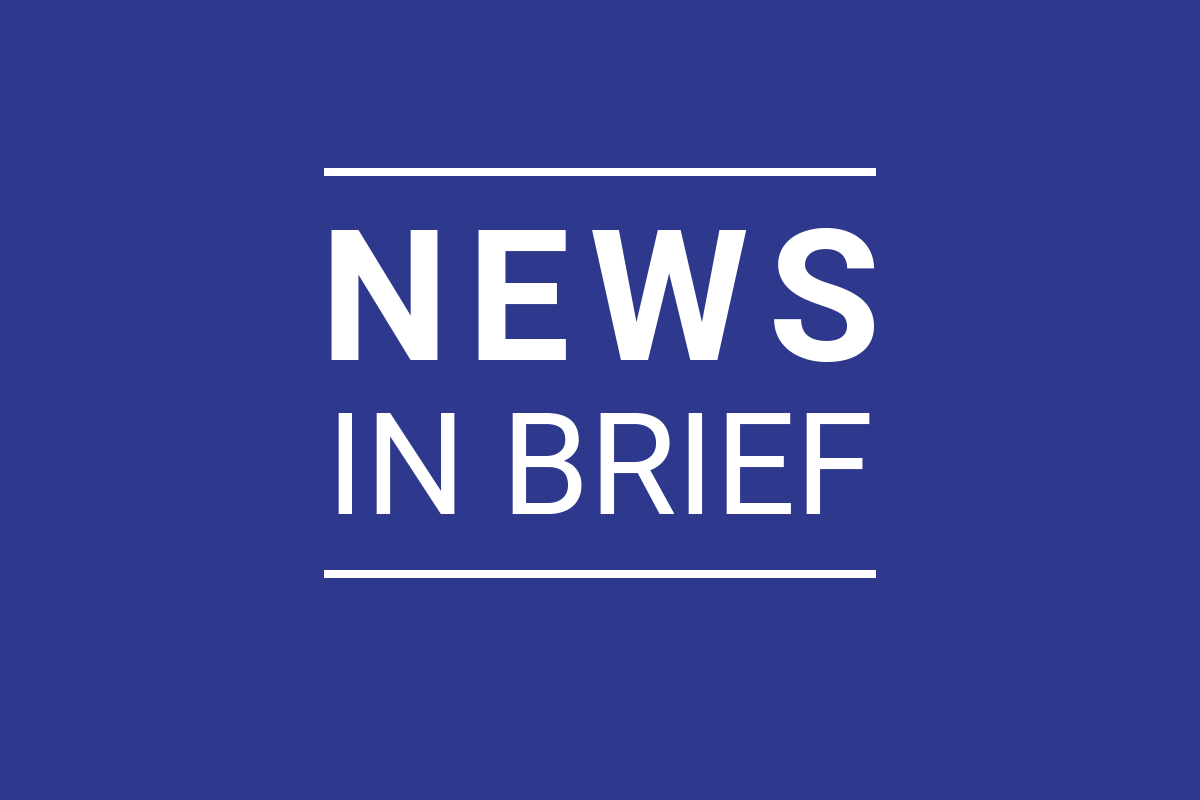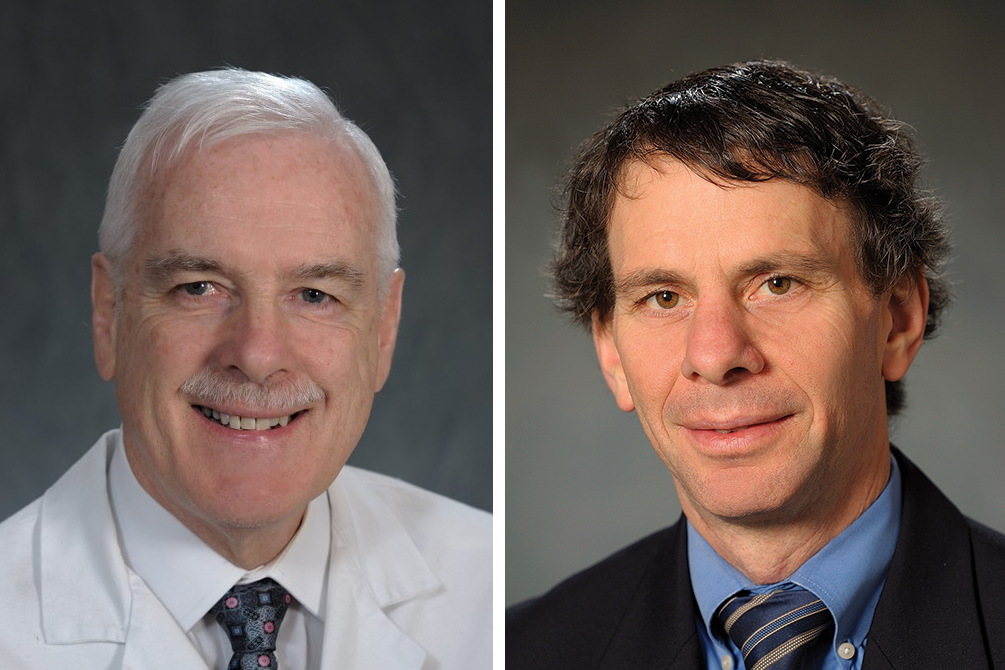
Now Enrolling: EA4232 for Patients With Peripheral T-Cell Lymphoma
February 19, 2025
News in Brief, March 2025
March 21, 2025From the Co-Chairs, February 2025


By Peter J. O’Dwyer, MD (left)
and Mitchell D. Schnall, MD, PhD
In case you missed it, the co-chairs recently issued a special Note of Concern, reprinted below, regarding the immense value of Cooperative Group cancer research and the importance of its continued funding.
As of this writing, communications with our National Cancer Institute (NCI) and Food and Drug Administration (FDA) colleagues have been curtailed with the change of administration. We want to reassure you that all of our research functions are continuing uninterrupted, that patient safety continues to be monitored, and that while we expect changes, these will ultimately not be clarified until leadership appointments are confirmed and new political appointees are in place. However, the goal of alleviating the burden of cancer in the population is a shared one and unwavering. Our embrace of that goal has a long arc, and we recognize that it may be approached in many ways.
- First, there may be a misapprehension that we are some kind of subsidiary of the NCI. That is not the case—each Cooperative Group exists as an independent entity, legally an “unincorporated association” that receives about 50% of its operating costs from National Institutes of Health (NIH) funding.
- Second, the total budget for all six Groups from federal funding is around $100 million. That number is approximately the cost of a single pharmaceutical company registration study. Think of the range of trials accomplished by the Groups in just the last six years: in EA alone, our trials have changed practice in almost every oncology disease category. These findings are very much part of the declining death rate and the increase in the number of cancer survivors in this country. The other Groups have performed similarly. Drs. Joseph Unger and Charles Blanke of SWOG Cancer Research Network published in the Journal of Clinical Oncology (JCO) in 2023 a 40-year analysis of Group phase III trials: 88% changed practice guidelines, leading to an estimated 14 million life-years gained for patients with cancer.
- Third, the impression may exist in social media that “government clinical research is not needed—pharma can do this research.” Nothing could be further from the truth: pharma goals do not include discovering whether chemotherapy benefits women with early ER+ breast cancer (as in TAILORx), or whether melanoma patients with a BRAF mutation should begin treatment with immunotherapy or targeted therapy (as with DREAMseq, the JCO most impactful paper of 2023). Right now, pharma companies are increasingly less well-funded to develop the assets they have, even for a single indication. Our Group trials fill a deep need, and we should be thinking of more not fewer studies. Using social media to influence the readership may be necessary to fill information gaps. Reminding readers (the public) that the Groups produce evidence-based information and explaining the value in continuing to do so gets the word out as well as establishes a source to combat arguments made in these outlets.
There are other attributes of the Cooperative Groups that add immense value. We work with our Cancer Center members to keep research costs down, and NCI provides the incentives to do so. NCI also provides the underpinnings of standardized trial implementation in Cancer Centers as well as in the community: a uniform database and case report forms, uniform quality assurance and auditing, a central IRB that our institutions embrace, and resources to facilitate the research and respond to problems. We also implement technology advances. Where else could NCI-MATCH, a national trial of next-generation tumor sequencing, or its successor trials, ComboMATCH, myeloMATCH and others, be implemented if not in the Groups? Our correlative science program clarifies cancer biology in specific tumors and gives insight into new treatments—indeed this work, which has taken place over decades, informs much of the new therapeutic landscape in leukemias. We bring together expertise: cutting-edge oncologists and imagers, correlative scientists both social and biological, and nationally recognized biostatisticians. With that comes opportunities for training the next generation of research professionals in all job types.
Policymakers in this fragmented environment need to know about the contributions of our research to local economies. A guide to this is provided by NIH: in fiscal year 2023, every $1 of NIH funding generated approximately $2.46 of economic activity. The multiplier is well-recognized and is a reason that institutions large and small broadcast their links with one or another Cooperative Group. As Dr. Otis Brawley describes it, “It is a mark of quality, such that not only the patients on trials but all patients will receive better care.” Policymakers need to know too that our work has a patient-centered focus. We rely on patients and advocates to help set research priorities, and we are committed to following their recommendations on reducing the side effects of treatment in specific trials.
You ask, "What can we do to help?" For those of you in Cancer Centers, you can emphasize the need for partnership in this enterprise. Cancer Centers contribute to the Cooperative Group research programs by taking on trials at less than what it costs to do them. But in return, the Groups populate the portfolios with trials too large for any one Center to take on; they provide an affordable path to multi-institutional studies of cancer center research; they provide national exposure for early-career faculty; they provide the path to the faculty becoming key opinion leaders nationally; and they provide discipline-specific education and review of ideas, making the faculty more likely to succeed. The relationship has been truly symbiotic, and mutual support at this juncture is key.
We have been talking to key leaders in our field, and in this environment we must state the value of our work and the importance of its continued funding. It is as important to have this dialogue in our communities as it is with political leaders. Make sure people know the answer to, “What’s an ECOG-ACRIN?” and why its continued health may someday be the answer to theirs.
Read the February 2025 issue here.
![ECOG-ACRIN logo[19516]275×75](https://blog-ecog-acrin.org/wp-content/uploads/2021/03/ECOG-ACRIN-logo19516275x75.png)
